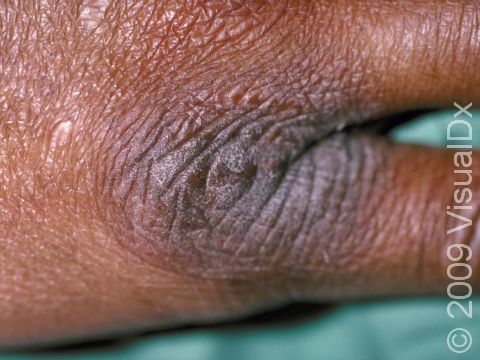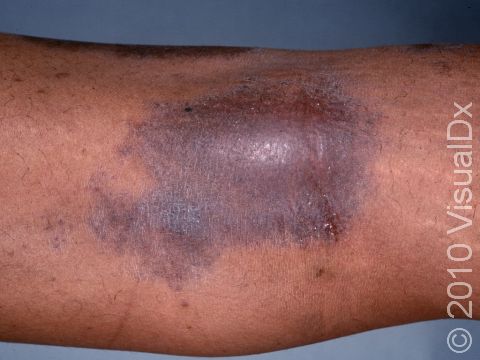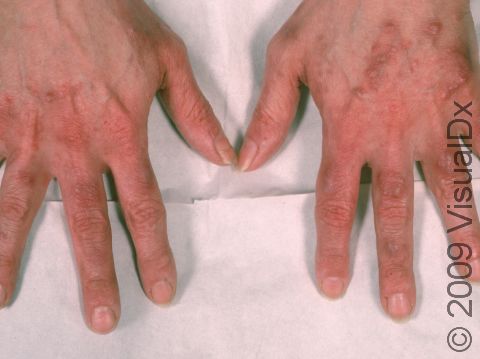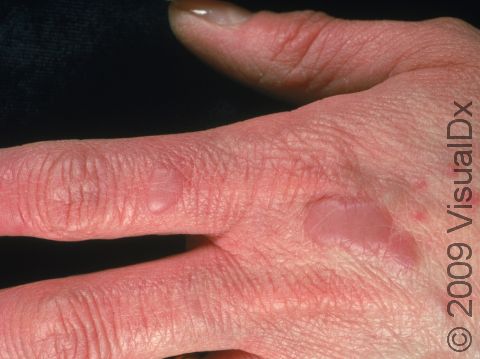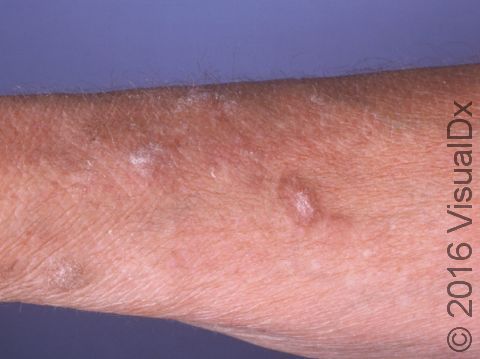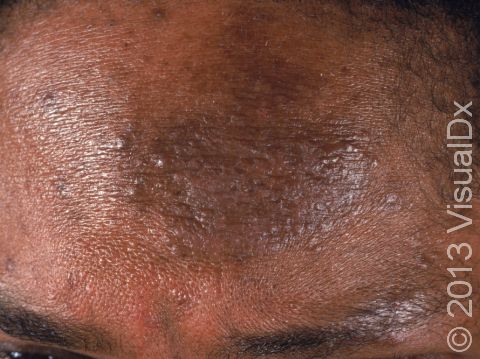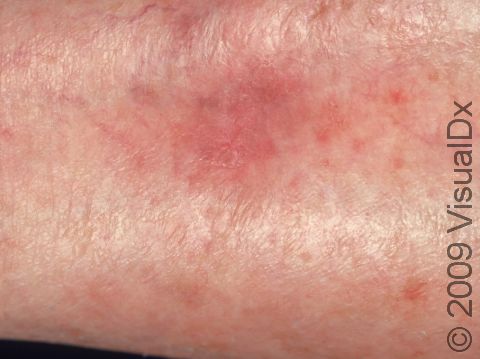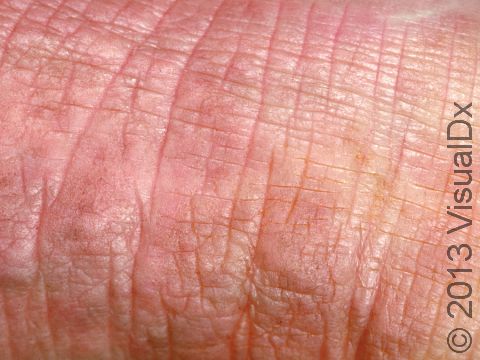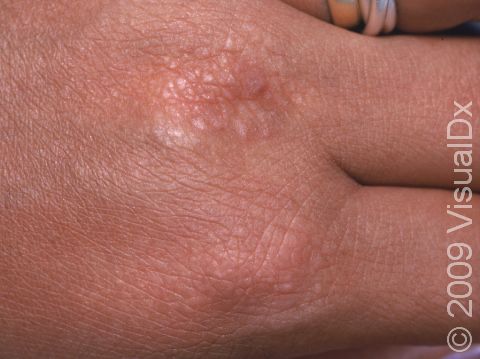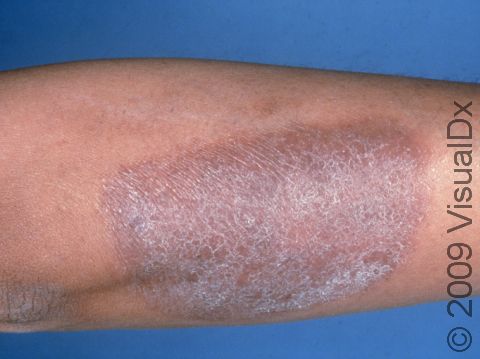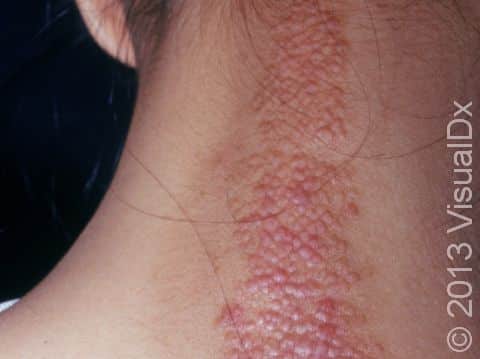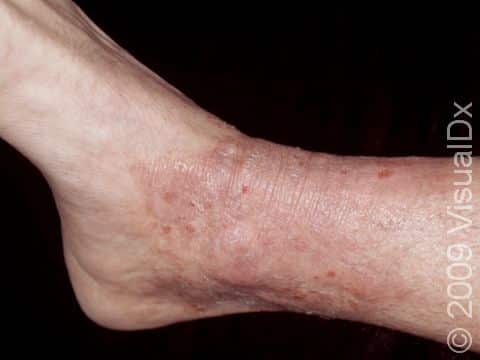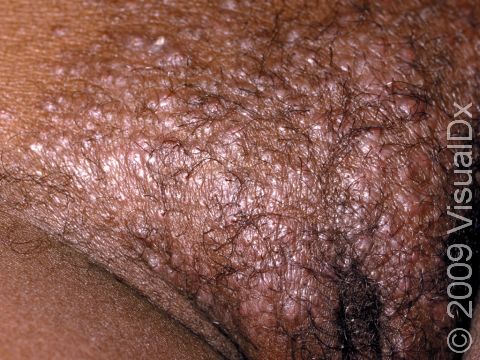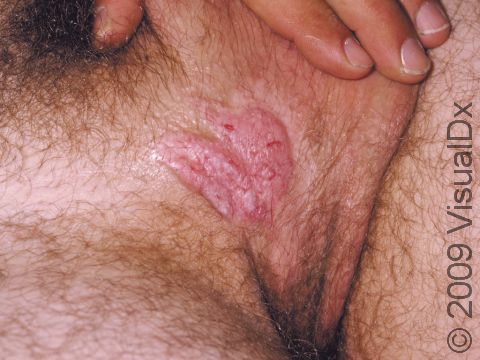Lichen Simplex Chronicus
Lichen simplex chronicus (LSC), also known as neurodermatitis circumscripta, is an itchy skin condition causing thickened skin at the areas of skin injured by repeated scratching and rubbing. Lichen simplex chronicus is not a primary disease but rather the skin’s response to chronic physical injury (trauma). The gradual thickening of skin, caused by repetitive scratching and rubbing, is called lichenification.
Lichen simplex chronicus begins as itchy skin. The itching leads to scratching and rubbing, which causes thickening of skin. The thickened skin is itchy, which causes more scratching and, thus, more skin thickening. This scratch-itch cycle continues if not treated.
Who's At Risk?
Lichen simplex chronicus can occur in people of any age, of any race, and of either sex. However, it is more common in females than in males and appears more frequently in middle-aged and older adults.
Conditions that can lead to lichen simplex chronicus include:
- Insect bites
- Scars
- Eczema (atopic dermatitis)
- Dry skin (xerosis)
- Poor circulation in legs (venous insufficiency)
- Anxiety and stress
Signs & Symptoms
Although it can occur anywhere on the body, lichen simplex chronicus is most commonly seen in the following areas:
- Inner wrists, forearms, and elbows
- Sides and back of neck
- Upper thighs, knees, shins, ankles, and tops of feet
- Vulva, scrotum, anus (anogenital areas)
- Scalp
Each patch of lichen simplex chronicus appears as leathery, thickened skin in which the normal skin lines are exaggerated. The thickened skin is darker than surrounding skin (hyperpigmented). This darkening is even more apparent in dark-skinned people.
Individuals with lichen simplex chronicus report periodic itching that is most intense at night or any time they are still.
Self-Care Guidelines
- The primary treatment is to stop scratching. However, this can be very difficult once a scratch-itch cycle has started. Areas of lichen simplex chronicus may need to be covered at night, as many people scratch in their sleep.
- Use moisturizers to help relieve itchy skin. When choosing a moisturizer, look for oil-based creams and ointments, which work better than water-based lotions. Apply moisturizers just after bathing, while the skin is still moist.
- Apply over-the-counter hydrocortisone cream to decrease the itch. However, if the itching is limited to the groin area, you may have a fungal infection (jock itch [tinea cruris]) rather than lichen simplex chronicus. Do not apply hydrocortisone to the groin area unless recommended to do so by a doctor.
- If there are breaks or cracks in the skin, apply an antibiotic ointment to prevent infection.
Treatments
If your doctor is not sure if you have lichen simplex chronicus, he/she may wish to perform a skin biopsy to confirm the diagnosis. The procedure involves:
- Numbing the skin with an injectable anesthetic.
- Sampling a small piece of skin by using a flexible razor blade, a scalpel, or a tiny cookie cutter (called a “punch biopsy”). If a punch biopsy is taken, a suture or two may be placed and will need to be removed 6–14 days later.
- Having the skin sample examined under the microscope by a specially trained physician (dermatopathologist).
Once you are sure you have lichen simplex chronicus, it is important to break the scratch-itch cycle. In addition to the above self-care measures, your doctor may recommend one or more of the following treatments to reduce itching and scratching:
- Aggressive moisturizing techniques
- Corticosteroid (cortisone) creams or ointments
- Creams containing salicylic acid or urea, to improve penetration of the topical corticosteroid
- Oral anti-histamines, especially for use at bedtime
- Injection of corticosteroid solution directly into the lichen simplex chronicus lesions
- Ultraviolet light therapy
- Sedatives or anti-depressants for people with lichen simplex chronicus strongly related to psychological stress
- Doxepin or capsaicin cream
- Topical or oral antibiotics if infection is present
Visit Urgency
See your doctor if the itching does not improve with self-care measures, if you are developing more lesions, or if you develop symptoms of infection such as pain, redness, drainage of pus, or fever.
Trusted Links
References
Bolognia, Jean L., ed. Dermatology, pp.117-118. New York: Mosby, 2003.
Freedberg, Irwin M., ed. Fitzpatrick’s Dermatology in General Medicine. 6th ed, pp.1196-1197. New York: McGraw-Hill, 2003.
Last modified on October 10th, 2022 at 4:34 pm

Not sure what to look for?
Try our new Rash and Skin Condition Finder
